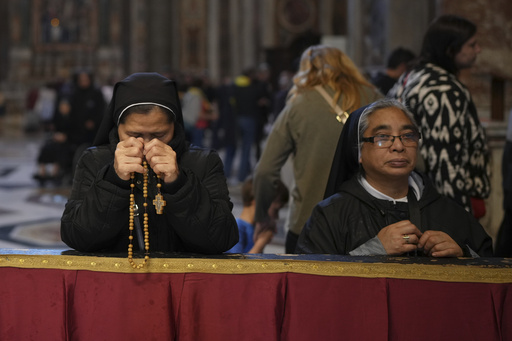VATICAN CITY—Pope Francis, who hailed from Argentina and became the first Latin American leader of the Catholic Church, passed away on Easter Monday at the age of 88. After serving as pontiff for over 12 years, his death marked a significant moment in history for the church and its followers worldwide.
The Vatican announced that Pope Francis died at the Domus Santa Marta hotel in Vatican City, where he resided. His passing occurred nearly a month after he returned from the hospital, where he had been treated for double pneumonia. Vatican sources reported that the cause of death was a stroke.
To honor the late pontiff, his body has been placed in a simple wooden coffin in St. Peter’s Basilica, dressed in red liturgical vestments with a rosary clasped in his hands. A continuous stream of mourners from across the globe has been visiting to pay their respects, prompting the basilica to remain open all night. The doors will stay open until midnight on Thursday, offering more time for mourners, after which public viewing will cease.
The funeral service is set for Saturday in St. Peter’s Square, and it is anticipated that a number of world leaders, including U.S. President Donald Trump, will attend. In line with his wishes, Pope Francis will be laid to rest in a simple underground tomb at St. Mary Major Basilica, a place of particular devotion for him because of its revered icon of the Virgin Mary.
On his final public venture, Pope Francis appeared during Easter Sunday celebrations the day prior to his death. Despite his fragile condition, he blessed the gathered congregation from the loggia of St. Peter’s Basilica and took a surprise tour in the popemobile, eliciting cheers from spectators. In a brief meeting with Pope Francis, U.S. Vice President JD Vance later mentioned that the pontiff appeared “obviously very ill.”
Reactions to Francis’ passing have spanned the globe, with Catholics mourning in various countries, from Argentina to the Philippines, as well as messages of sympathy flooding in from different world regions. He was remembered by both Catholic and non-Catholic communities as a fervent supporter of marginalized groups, migrants, the LGBTQ+ community, and environmental efforts, alongside his stance for open interfaith dialogues.
Pope Francis had been battling chronic lung issues throughout his life, stemming from a surgery in his youth where part of a lung was removed. His condition escalated into a respiratory crisis resulting in a 38-day hospitalization in Rome, the longest of his papacy.
Following his death, the Church embarked on a traditional mourning path, allowing the public to view his body and conduct the funeral. This will be followed by a nine-day mourning period termed “novendiali.” Post this period, cardinals will gather in Rome for a conclave to elect the next pope. The conclave process, traditionally conducted in secrecy, could start anywhere from 15 to 20 days after the declaration of the “sede vacante,” with votes cast and burned until a new pope is chosen, signaled by white smoke.
During his tenure, Francis faced scrutiny over the Vatican’s ambiguous stance regarding the Ukraine conflict. Attributed to the Vatican’s neutral diplomacy, some criticized his perceived leniency towards Russia’s actions in Ukraine. Russian President Vladimir Putin praised Francis as a defender of humanistic values, while Ukrainian President Volodymyr Zelenskyy reflected on the pope’s prayers for peace in Ukraine.
In terms of addressing clergy sex abuse within the Church, Francis’ approach had been a subject of contention. Critics pointed out the lack of sufficient reforms to deliver justice to victims and bring about necessary changes. Furthermore, groups such as the Women’s Ordination Conference expressed frustration over his reluctance to advance the ordination of women, further complicating his legacy for many within the church community.


